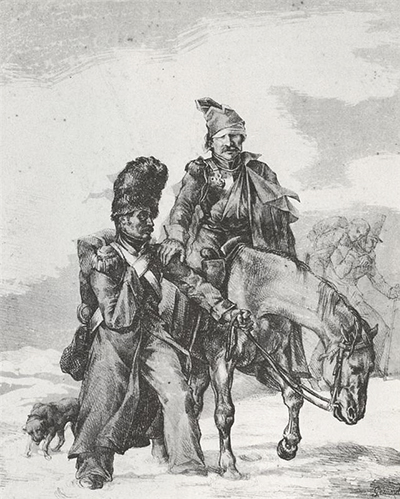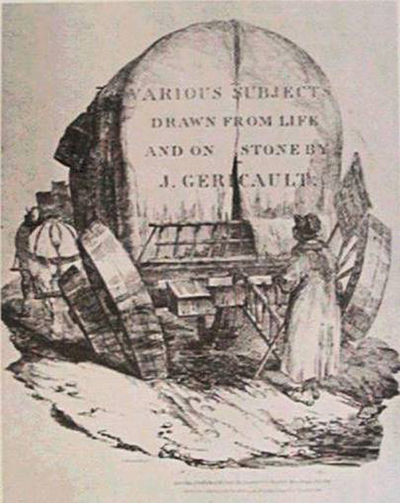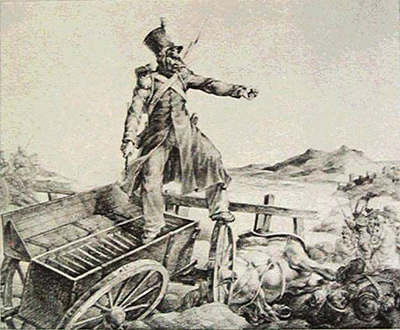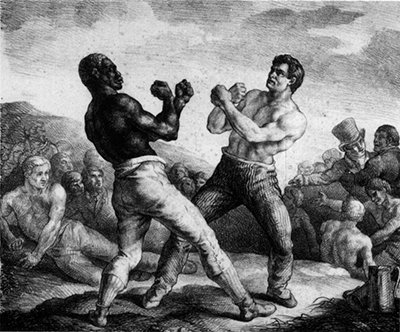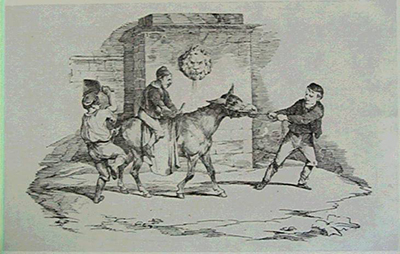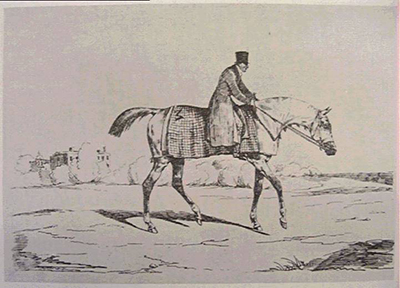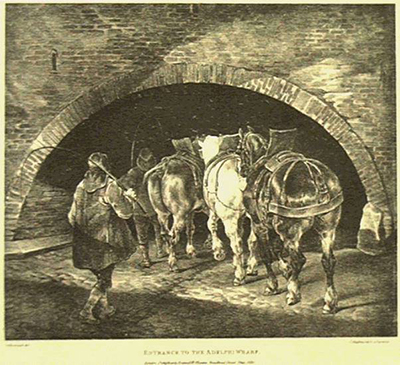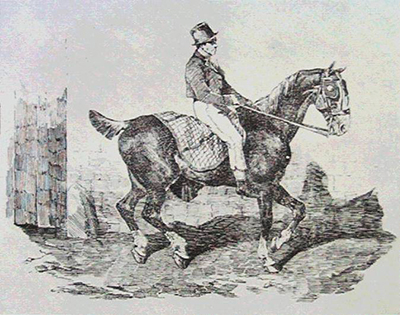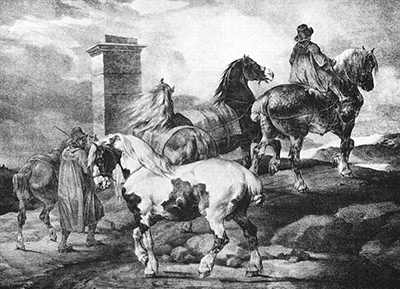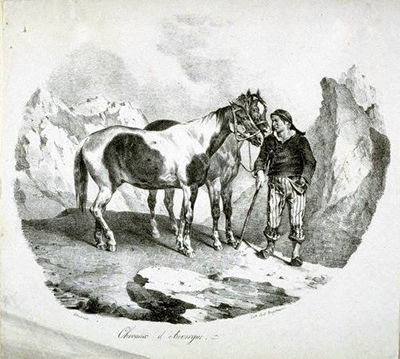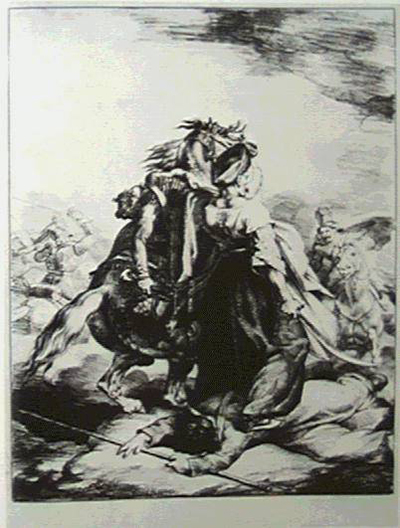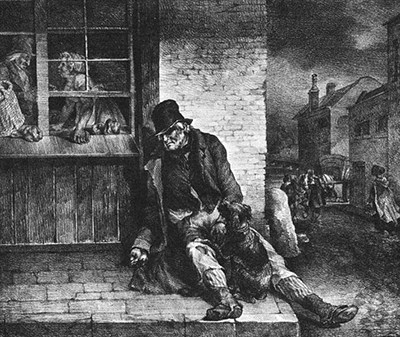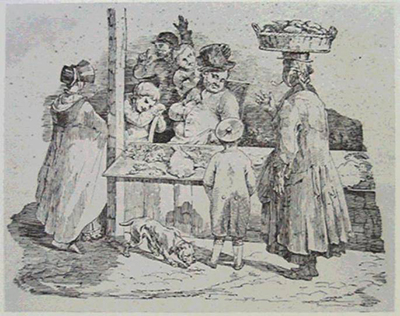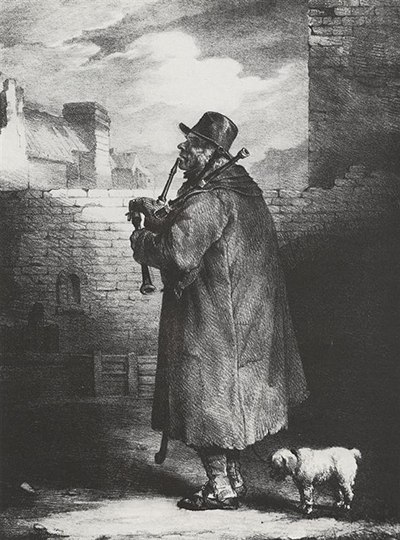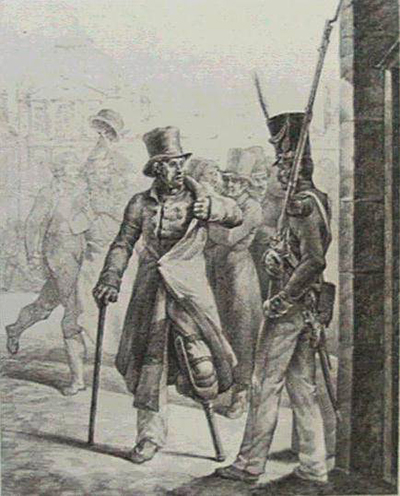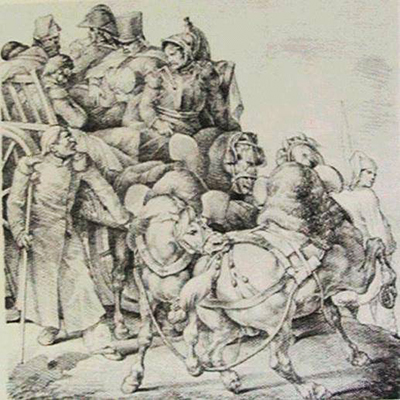Théodore Géricault, one of the founders of the Romantic movement, is best known for his dramatic painting Raft of the Medusa, but he was also one of the pioneers of lithography
Lithography is a printing technique which makes use of the fact the oil and water repel each other. The image is drawn onto a smooth piece of limestone with a waxy or oily medium. The stone is then coated with an aqueous solution of gum arabic. When oil-based ink is used, it is repelled from the aqueous solution and takes the shape of the drawing, allowing it to be printed multiple times. This technique was invented in 1796, and Géricault's works are thought by many to be the first masterpieces of the medium.
Géricault had a passion for horses and would spend hours at the stables of Versailles sketching and studying their anatomy. It is not surprising that many of his lithographs feature horses, whether working horses such as in The Coal Wagon, or in battle such as in The Infidel. He drew many images of farriers, usually in the act shoeing horses. His lithograph Dead Horse shows the poignancy and drama his works are known for, while being an anatomically accurate drawing from an unusual angle. He produced a whole series of horse lithographs, showing all aspects of equestrian life, and horses feature heavily in in military works.
His use of light and shade, along with his extensive knowledge of their anatomy, allows him to show these animals as dynamic, living beasts. After the lukewarm reception to Raft of the Medusa in Paris, he travelled to England to show the painting. Here he spent time with the lithographer Charlet, executed many of his great lithographs and many show scenes of British life. Man on Street shows Géricault's attention to realism and emotion.
An old man slumps on a street corner, his dog looking up at him. Behind him a couple talk behind an open window, and smoke billows above him.
The Piper shows a man in worn clothes playing the bagpipes. His little dog trudges sadly behind him. Soft lines of cross hatching create a sense of depth and a suggestion of a damp, misty London night.
The urban poverty Géricault saw in London affected him deeply, and he portrays it unflinchingly and expressively.
His lithograph The Boxers is a sporting scene, and an unusual subject at the time. The drawing shows two men, on black and one white, engaged in a boxing match as a crowd watch. Boxing was very popular in Britain at the time, and was increasingly so in France.
The two men are mirrored in pose, but contrast each other. The black boxer's body is strongly rendered with pen and ink lines, whereas the torso of the white fighter is drawn with soft crayon. However, both appear equally matched in strength with their tense, bulging muscles.
Military subjects were another common theme of Géricault's lithography, concentrating on the price of war, rather than glorious victories.
In Swiss Guard and Wounded Veteran an amputee pulls his coat open to show his medal to a member of the Swiss Guard. The wounded man meets the guard's gaze with strength, pride and defiance.
Retreat from Russia shows a one-armed soldier leading his blinded comrade on a tired, broken horse. In the background, sketched in, another injured man is carried.
The pathos of the subjects does not detract from their dignity. Cart Filled with Wounded Soldiers keeps to the theme of showing war's horrors, and demonstrates the advantage of lithography over engraving – the strokes of the drawing are soft curves, giving a more nuanced and textured effect than a copper engraving – the method of reproduction that lithography replaced.
The rise of the Romantic movement was, in part, due to Géricault's lithography.
With this new technique it was possible to print multiple copies of artworks that kept all the expression and subtlety of the original drawing. Lithography was a relatively cheap way of printing and allowed these works to be seen by a broad audience.
Géricault's ability to capture the emotional drama of a scene without straying into sentimentality, captured the imagination of many and was a great influence on his friend Delacroix. Géricault was the first master of lithography, and his work is as powerful today as when it was first printed.



